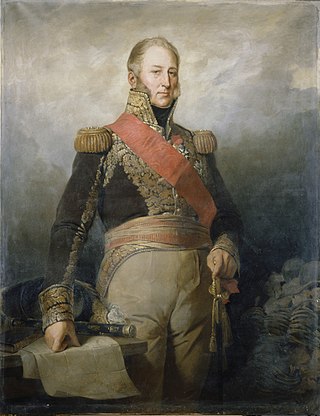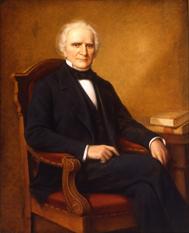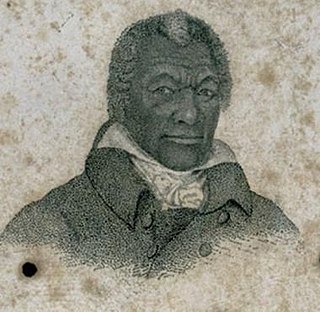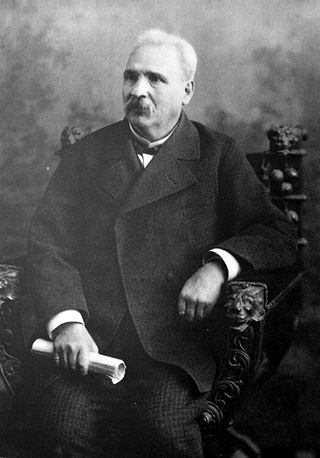Related Research Articles

Richard Wigginton Thompson was an American politician.

The 21st United States Congress was a meeting of the legislative branch of the United States federal government, consisting of the United States Senate and the United States House of Representatives. It met in Washington, D.C. from March 4, 1829, to March 4, 1831, during the first two years of Andrew Jackson's presidency. The apportionment of seats in the House of Representatives was based on the 1820 United States census. Both chambers had a Jacksonian majority.

The 22nd United States Congress was a meeting of the legislative branch of the United States federal government, consisting of the United States Senate and the United States House of Representatives. It met in Washington, D.C. from March 4, 1831, to March 4, 1833, during the third and fourth years of Andrew Jackson's presidency. The apportionment of seats in the House of Representatives was based on the 1820 United States census. Both chambers had a Jacksonian majority.

Laurent de Gouvion Saint-Cyr, 1st Marquis of Gouvion-Saint-Cyr was a French military commander in the French Revolutionary and Napoleonic Wars who rose to the rank of Marshal of the Empire. He is regarded as Napoleon's finest commander in defensive warfare.

Adolphe Édouard Casimir Joseph Mortier, 1st Duke of Trévise was a French military commander and Marshal of the Empire under Napoleon I, who served during both the French Revolutionary Wars and the Napoleonic Wars. He was one of 18 people killed in 1835 during Giuseppe Marco Fieschi's assassination attempt on King Louis Philippe I.

Samuel Delucenna Ingham was a state legislator, judge, U.S. Representative and served as U.S. Treasury Secretary under President Andrew Jackson.

The United States Senate Committee on Veterans' Affairs deals with oversight of United States veterans problems and issues.

James Armistead Lafayette was an enslaved African American who served the Continental Army during the American Revolutionary War under the Marquis de Lafayette, and later received a legislative emancipation. As a double agent, he reported the activities of Benedict Arnold after he had defected to the British, and of Lord Charles Cornwallis during the run-up to the siege of Yorktown. He fed the British false information while disclosing very accurate and detailed accounts to the Americans.

Lafayette Sabine Foster was a nineteenth-century American politician and lawyer from Connecticut. He served in the United States Senate from 1855 to 1867 and was a judge on the Connecticut Supreme Court from 1870 to 1876.

Washington's Headquarters State Historic Site, also called Hasbrouck House, is located in Newburgh, New York overlooking the Hudson River. George Washington lived there while he was in command of the Continental Army during the final year of the American Revolutionary War; it had the longest tenure as his headquarters of any place he had used.

The 45th United States Congress was a meeting of the legislative branch of the United States federal government, consisting of the United States Senate and the United States House of Representatives. It met in Washington, D.C. from March 4, 1877, to March 4, 1879, during the first two years of Rutherford Hayes's presidency. The apportionment of seats in the House of Representatives was based on the 1870 United States census. The Senate had a Republican majority, and the House had a Democratic majority.

The 46th United States Congress was a meeting of the legislative branch of the United States federal government, consisting of the United States Senate and the United States House of Representatives. It met in Washington, D.C. from March 4, 1879, to March 4, 1881, during the last two years of Rutherford Hayes's presidency.

The Little War or Small War was the second of three conflicts between Cuban rebels and Spain. It started on 26 August 1879 and after some minor successes ended in rebel defeat in September 1880. It followed the Ten Years' War of 1868–78 and preceded the final war of 1895–98, which resulted in American intervention and Cuban independence.

Petko Rachov Slaveykov was a Bulgarian poet, publicist, politician and folklorist.

The Provisional Government was formed as a revolutionary committee of notables during the Belgian Revolution on 24 September 1830 at the Brussels City Hall under the name of Administrative Commission.

John Gorham Palfrey was an American clergyman and historian who served as a U.S. Representative from Massachusetts. A Unitarian minister, he played a leading role in the early history of Harvard Divinity School, and he later became involved in politics as a State Representative and U.S. Congressman.
The United States House Committee on Invalid Pensions is a former committee of the United States House of Representatives from 1831 to 1946.
The United States House Committee on Roads and Canals was a U.S. House committee, which was initially established as a select committee in 1815 and subsequently became a standing committee between 1831 and 1869. Roads and canals were an initial and integral sector of domestic improvements for transportation. Previously from 1795 to 1815, federal government support for internal improvements was under the jurisdiction of the Committee on Commerce and Manufactures. Considered closely related to increasing the value of domestic commerce and funded by protective tariffs on it, the general subject of internal improvements was one of the most contentious issues in the young republic, despite the near-universal acceptance of the need for such development.
The Committee on Pensions was a standing committee of the United States Senate from 1816 to 1946, when the Legislative Reorganization Act of 1946 abolished it, moving its functions to the Committee on Finance.

Molly Pitcher is a nickname given to a woman said to have fought in the American Revolutionary War. She is most often identified as Mary Ludwig Hays, who fought in the Battle of Monmouth in June 1778. Another possibility is Margaret Corbin, who helped defend Fort Washington in New York in November 1776.
References
- 1 2 "Committee on Revolutionary Pensions (1831-1880)". National Archives . Retrieved 14 August 2011.